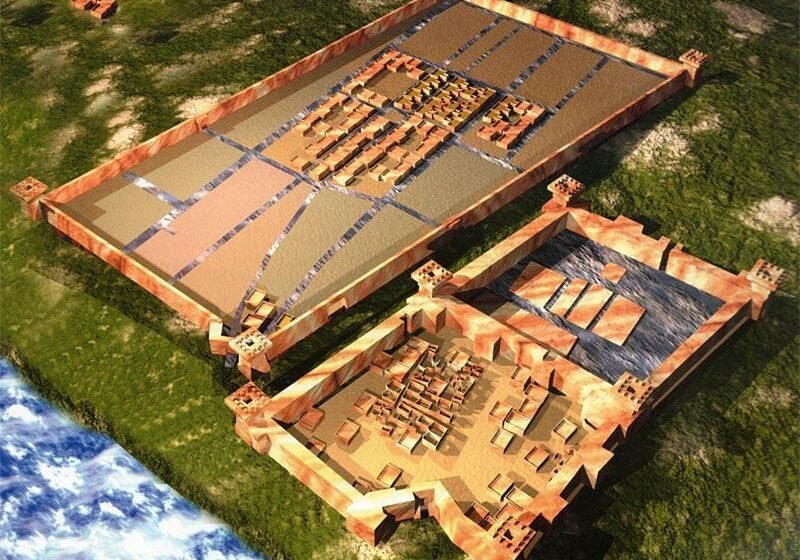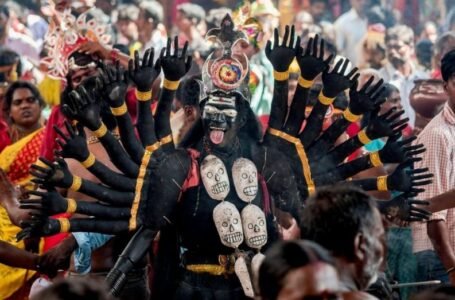KALIBANGAN: A look into our collective past

While most of us study about Indus valley civilization in school or come across it in college, only some people truly get to explore the details and beauty of it. Kalibangan is one of the places that provide you with a chance to look into the past and its people. This archaeological site, which was found in the early 20th century, provides insights into one of the first urbanized communities in human history. Kalibangan is highly known for its distinctive architectural elements, which include thoughtfully designed roadways, advanced drainage systems, and the oldest known ploughed field in history.

HISTORY
Located in the Indian state of Rajasthan, Kalibangan is an important part of the Indus Valley Civilization archaeological sites. Discovered in 1953, it was inhabited between 3500 and 1750 BC and is said to have two distinct phases which were the pre-Harappan phase and Harappan phase.
There is evidence of early agriculture and plough fields here that hints at the agriculture’s advancement here. By around 2600 BC, it had developed into a well-planned, fully-fledged Harappan city with a fort, road networks and impeccable aqueducts. The earliest evidence of cultivated land indicates that the inhabitants practiced intensive farming, and is one of Kalibangan’s unique finds. All this points to a rich history of trade and cultural exchange with other Harappan civilizations.

Kalibangan was seen and first recognised by Luigi Tessitori for the prehistoric and pre-Mauryan nature of the Indus Valley Civilisation. The Archaeological Survey of India published the full excavation report of Kalibangan in 2003, almost 34 years after the completion of excavations. Concluding Kalibangan to have been the main city of the Indus Valley Civilisation.
ORIGIN
The word Kalibangan translates to black bangle and is derived from the many black clay bangles found at the site during the early stages of excavation. The unique role of the city in the development of early urban settlements in the Indian subcontinent makes it rather important. There were findings of mud-brick houses, primitive urban construction, and the first signs of agriculture here.

The first signs of agriculture in the Indian subcontinent are the agricultural patterns found at Kalibangan, which suggest that the local people of this city were quite knowledgeable about agriculture. In the absence of evidence of advanced irrigation systems, it is likely that the early inhabitants practiced a simple form of rainfed agriculture, dependent on rainfall.
Kalibangan became a fully-fledged Harappan city around 2600 BC, marking its incorporation into the Indus Valley Civilization. The city displayed features of Harappan architecture from this period, including walled citadels, grid-like streets, and complex plumbing practices. Seals, ceramics, and terracotta figurines, similar to other Harappan sites such as Mohenjo-Daro and Harappa, indicate that the city was also engaged in trade for a long time.

AGRICULTURE AT KALIBANGAN
The fields at Kalibangan are displayed in rows and hence give examples of good agricultural practices by the local people of that time. The orientation of these furrows suggested that their purpose was to capture rainwater, demonstrating a deeper understanding of water management and dry farming depending on their region. There were also findings that pointed at double cropping where two types of crops are grown in a year.
The agriculture here was hence adapted to the local area, relying on its natural rainfall rather than the laborious irrigation systems used elsewhere in the Indus Valley Civilization. Crops grown here were said to have been wheat, barley, peas, and other millets. The diversification of crops, including legumes and cereals, indicates mixed farming, which maintained soil fertility and provided adequate nutrition to the people. Additionally, there is evidence at the site of the usage of gypsum calcium sulphate and manures as fertilizers. It is possible to draw the conclusion that Kalibangan was one of the locations where the first artificial irrigation systems began to emerge. Moreover, cattle were employed in agriculture.

CURRENT LOCATION AND CENARIO
Kalibangan declined without an apparent cause, much like all the other Harappan sites. It is debatable what caused this decline. A number of invasions, climate change, or Bond event ideas are insufficient to explain the abrupt closure of this rather significant location. Robert Raikes suggested that the Kalibangan was abandoned due to the river’s drying up. BB Lal added weight to this thesis by presenting radiocarbon dates that showed the same place was abandoned because of hydrological evidence. The hypotheses of decline are still up for debate, though.
Kalibangan is currently located in the Hanumangarh district of Rajasthan in India, is an archaeological site that houses important artifacts from the Indus Valley Civilisation (IVC). The site is located on the southern bank of the Ghaggar River, which is considered by many to be the source of the Saraswati River. Additionally, it is mentioned as having been founded in the triangle of territory where the Sarasvati and Drishadvati Rivers meet or converge.

The conservation of Kalibangan is currently managed and taken care of by the Archaeological Survey of India (ASI). Even though it is not as well-known as Harappa or Mohenjo-Daro, scholars that study South Asian agriculture and ancient urban life continue to focus on it.
PRESERVATION
As the principal government institution in charge of Kalibangan conservation, preservation, and management, the Archaeological survey of India operates under the Ministry of Culture. Archaeological survey of India has been in charge of the site’s preservation since its excavation in the 1950s and 60s. This includes routine monitoring, structural conservation, and safeguarding against unauthorized access. To minimize any harm to the delicate remnants of the old village, the Archaeological survey of India has gated off the area to regulate visitor mobility.

The Indian government has also implemented legislative frameworks to safeguard Kalibangan, in addition to the physical safeguards already implemented at the location. According to the Ancient Monuments and Archaeological Sites and Remains Act (AMASR) of 1958, Kalibangan has been designated as a protected monument. This law makes sure that no development or construction takes place without the necessary permission in the site’s-controlled vicinity. Those who try to damage or deface the site may also be punished under the law.
In order to make the discoveries made at the Kalibangan site more approachable for both the general public and academics, the archaeological museum at Kalibangan is a vital cultural and educational establishment. The museum is divided into three galleries one for the pre-Harappan discoveries, and the two devoted to Harappan artifacts. The displays include beads, terracotta items, seals, copper and bronze tools, stone tools etc. Aside from agricultural tools that showcase traditional farming methods, the museum also has models of fire altars used in religious ceremonies.

CONCLUSION
The Indus Valley Civilization’s innovation and sophistication are demonstrated by Kalibangan. From its distinctive fire altars to its oldest ploughed fields, the archaeological finds provide invaluable insight into the ancient way of life, urban planning, and religious rituals. Kalibangan is a historically significant site that contributes to our understanding of early human settlements and emphasizes the importance of ongoing research and preservation. It makes us respect our common past and fulfils our curiosity.


